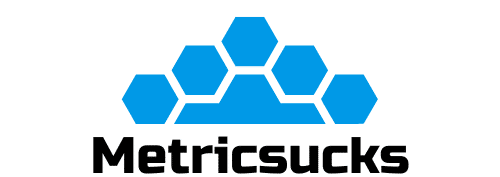How to Design Senior Living Facilities with Advanced Health Monitoring Technologies?

Innovations in technology are dramatically changing the landscape of senior care. As an increasing number of seniors prefer to live independently, the demand for smarter, more connected senior living environments is on the rise. Today, we’re going to delve into how to design senior living facilities with advanced health monitoring technologies. This article aims to empower you with the essentials of integrating technology solutions to enhance the quality of life for seniors.
Incorporating Smart Technology for Resident Health Monitoring
Let’s begin by exploring how smart technologies can be weaved into senior living facilities to provide continuous health monitoring and support for residents.
A lire aussi : How to Design Real Estate to Support Autonomous Vehicle Integration in the Near Future?
The advent of smart technology has made it possible to monitor a resident’s health on a real-time basis. Devices such as smart bands can measure vitals like heart rate, blood pressure, and sleep patterns. They also have features like fall detection which can instantly alert the staff in case of emergencies. Similarly, smart beds can provide data about sleeping habits and restlessness during sleep.
This continuous stream of health data can be invaluable to staff, helping them monitor residents’ health closely, identify potential problems early, and provide timely intervention.
Lire également : What Are the Innovative Strategies for Real Estate Development in High-Altitude Areas?
Moreover, smart technology allows seniors to retain their independence while still benefiting from constant health monitoring. They don’t have to rely on staff for routine health check-ups, and this can greatly enhance their quality of life.
Designing Social Interactions Using Technology
While physical health is paramount, the social well-being of seniors cannot be ignored when designing senior living facilities. Let’s delve into how technology can help foster social connections among residents.
Technology solutions like virtual social platforms can provide opportunities for seniors to interact and engage with others, even when physical interaction isn’t possible. These platforms can host a variety of activities such as group fitness classes, book clubs, or even virtual tours to different parts of the world.
Moreover, technology can help seniors stay connected with their family and friends outside the facility. Video calling tools can make it easy for seniors to have face-to-face conversations with their loved ones, eliminating feelings of isolation and loneliness.
Remember, maintaining social connections is vital for mental health and overall well-being of seniors. Therefore, incorporating technology that fosters social interactions is a critical part of designing senior living facilities.
Leveraging Data to Improve Care
The power of data is immense when it comes to improving care for seniors. Here, we look at how data can be harnessed to provide better care for residents.
The health monitoring devices mentioned earlier can generate a large amount of data. This data can be analyzed to gain insights into a resident’s health trends and patterns. For instance, data from a smart band can indicate if a senior’s sleep quality is deteriorating over time, signaling the need for intervention.
Furthermore, data can facilitate personalized care for each resident. With insights about individual health patterns and lifestyle habits, the staff can tailor care plans to meet the unique needs of each senior.
Lastly, data can also be used to improve operational efficiency of the facility. For example, data about staff work patterns can reveal if there’s a need for more staff during certain hours.
Training Staff to Use Technology
Of course, introducing advanced technology into a senior living facility would require staff to be trained to use these tools effectively.
Staff training is paramount to ensure that the technology is used to its fullest potential. This includes not just understanding the functionalities of the devices, but also knowing how to interpret the data generated by these tools, and how to act on it.
Moreover, staff should be trained to educate seniors about these technologies. Many seniors may be unfamiliar with or apprehensive about using these devices. Therefore, it’s crucial that the staff can guide them, address their concerns, and help them understand the benefits of these tools.
Ensuring Technology is Accessible and User-friendly for Seniors
Lastly, it’s important to ensure that the technology being introduced is accessible and user-friendly for the seniors.
Technology solutions for senior living facilities should be designed keeping in mind the needs and limitations of seniors. Consider factors like visual impairment, hearing loss, and reduced dexterity which are common among older adults. Ensure that the devices have large, clear displays, adjustable volume settings, and are easy to operate.
Moreover, the technology should be introduced gradually, giving ample time for the seniors to adapt. Offering demonstrations, one-on-one tutorials, or workshops can go a long way in helping seniors get comfortable with using these tools.
As you can see, the integration of smart technology into senior living facilities requires careful planning and execution. Yet, the benefits it offers in terms of improved health monitoring, enhanced social interactions, personalized care, and operational efficiency make it a worthwhile investment. So, let’s embrace technology and reimagine the future of senior living.
Enhancing Memory Care with Artificial Intelligence and Machine Learning
Memory care is a specialized form of long-term care designed to meet the specific needs of seniors with Alzheimer’s disease, dementia, or other types of memory problems. Let’s take a look at how artificial intelligence (AI) and machine learning can be utilized to enhance memory care in senior living communities.
Artificial intelligence and machine learning have immense potential to revolutionize memory care in senior living facilities. AI-based applications can assist in early detection of cognitive decline by analyzing patterns in a senior’s behavior and alerting staff when changes occur. For instance, inconsistencies in daily routines or increased instances of confusion could indicate the onset or progression of dementia.
On the other hand, machine learning, a subset of AI, can be used to personalize care. Machine learning algorithms can analyze real-time data from health monitoring devices, learning a resident’s normal behavior patterns and identifying deviations that may signal health issues. This allows for early intervention, possibly preventing or delaying further cognitive decline.
Moreover, AI-powered robots can assist residents with tasks and provide companionship, while virtual reality can stimulate cognitive function and provide mental health benefits. However, the key to successful integration of these advanced technologies is staff training and ensuring accessibility for seniors.
Transforming Nursing Homes with Technology
As the demand for high-quality senior care continues to rise, technology is playing a pivotal role in transforming nursing homes into advanced care facilities. Let’s examine how this transformation can occur.
In today’s digital era, the concept of nursing homes is evolving. Tech-savvy facilities are now leveraging advanced technologies to provide superior care to their residents. Real-time health monitoring, AI and machine learning, and virtual social platforms are just the tip of the iceberg.
For instance, remote patient monitoring systems can track vital signs and other health data in real time, allowing for immediate response to any health concerns. This can significantly improve the quality of care and may even save lives.
Similarly, technology can enable better communication within the nursing home environment. Digital platforms can facilitate smooth communication between staff, residents, and their families, creating a more transparent and connected living community.
Technology adoption in nursing homes also offers benefits such as improved efficiency, reduced healthcare costs, and better quality of life for residents. But these benefits can only be realized if the technology is user-friendly and easily accessible to both staff and seniors.
Conclusion
The advancement of technology presents an exciting opportunity to enhance the quality of life for seniors in living facilities. From real-time health monitoring to fostering social interactions, from leveraging data for personalized care to transforming memory care with artificial intelligence and machine learning, technology can significantly elevate the standard of senior care.
However, successful integration requires careful planning, staff training, and a focus on ensuring the accessibility and user-friendliness of technology for seniors. Additionally, the technology should not replace but supplement human care, emphasizing the importance of the personal touch in senior care.
In an era where the senior living industry is evolving rapidly, staying abreast of technological developments is not just beneficial, it’s essential. By embracing technology, we can ensure that our seniors live their golden years with dignity, independence, and happiness. Let’s continue to innovate and improve, shaping the future of senior living to be one that we can all look forward to being a part of.
